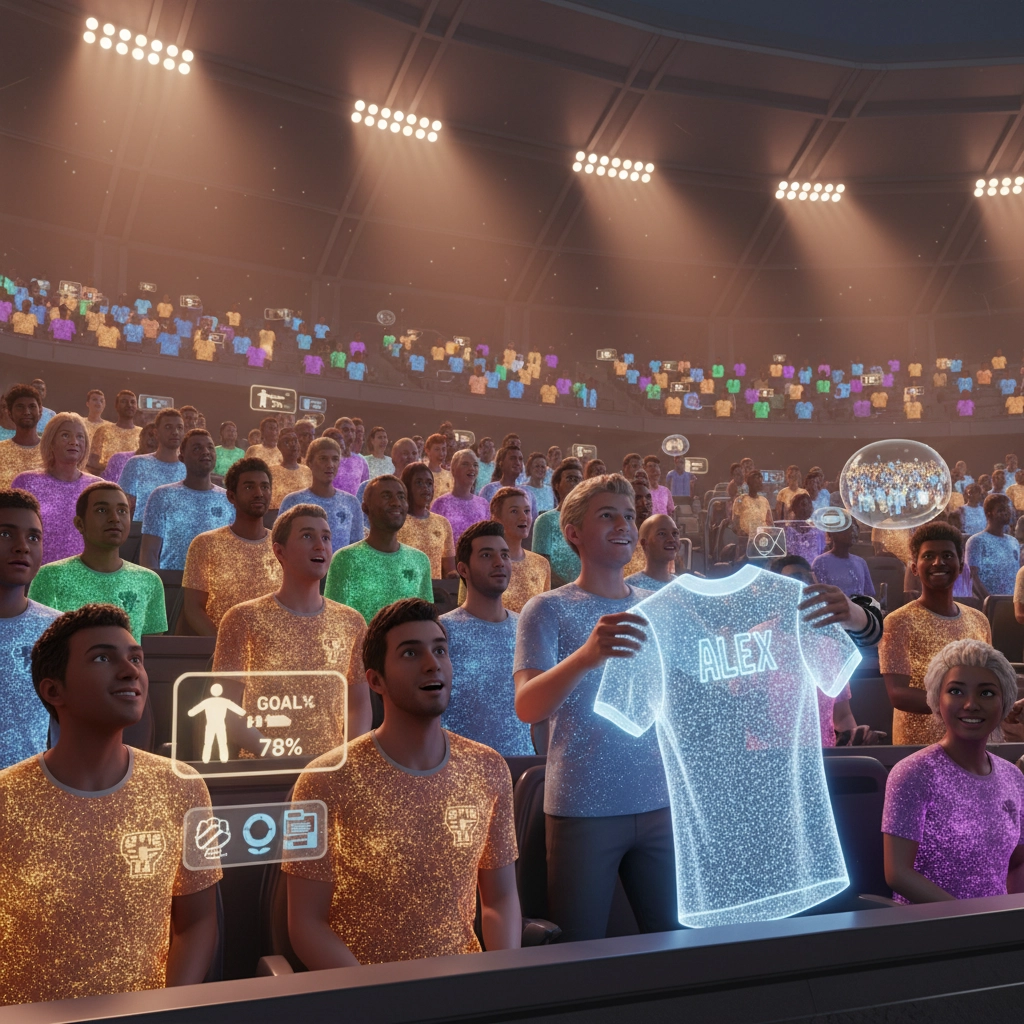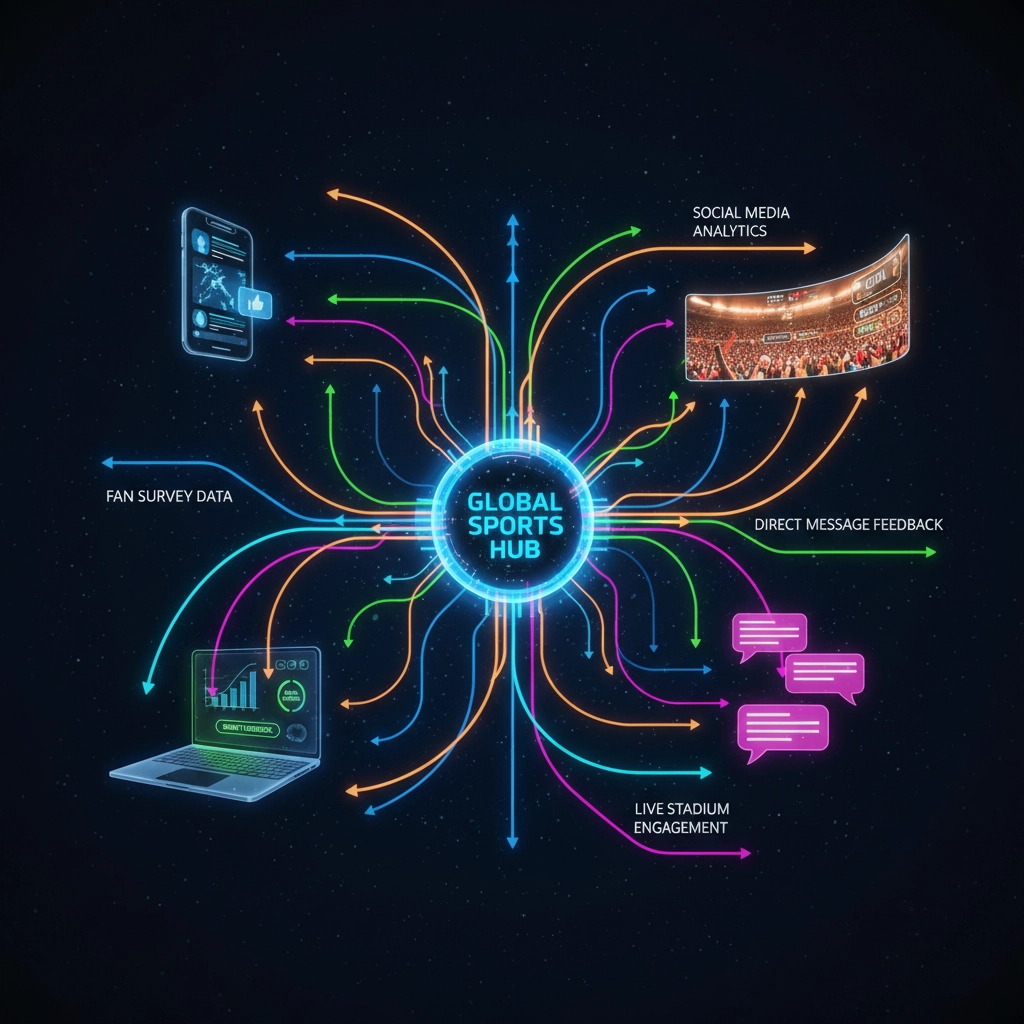Sports organizations spend significant resources acquiring new customers while existing fans remain underutilized. The conversion of sports fans into loyal customers requires a systematic approach based on established psychological principles rather than complex marketing strategies.
The Foundation: Recognition Over Transaction
The primary method for converting sports fans into loyal customers involves shifting from transactional relationships to relational connections. This approach centers on making fans feel valued as individuals rather than revenue sources. Research indicates that fans develop stronger loyalty when organizations demonstrate genuine commitment to understanding their specific needs and preferences.
Recognition functions as the core mechanism for this transformation. When sports organizations acknowledge individual fans through personalized communication, exclusive access, or tailored experiences, the psychological impact creates a sense of belonging. This belonging translates directly into increased spending, positive word-of-mouth promotion, and long-term customer retention.

The effectiveness of recognition stems from its ability to address fundamental human needs for validation and community connection. Sports fans already possess emotional investment in teams and athletes. Organizations that acknowledge this investment through personalized attention convert emotional connection into economic loyalty.
Digital Platform Implementation
Social media platforms provide the infrastructure necessary for systematic fan recognition and engagement. Platforms like Fanz.us enable sports organizations to create dedicated spaces for fan interaction, feedback collection, and personalized communication delivery.
The implementation of digital engagement platforms requires specific features:
- Direct communication channels between fans and organizations
- Feedback collection systems with visible response mechanisms
- Personalized content delivery based on fan behavior patterns
- Community spaces for fan-to-fan interaction
- Exclusive access opportunities for engaged users
These platform features create multiple touchpoints for recognition and personalization. Each interaction provides data for further customization while simultaneously reinforcing the fan's sense of value to the organization.
Listening and Response Systems
Active listening represents the second critical component of fan conversion. Organizations must establish systems for collecting, analyzing, and responding to fan feedback across multiple channels. This process involves more than passive monitoring; it requires visible implementation of fan suggestions and public acknowledgment of contributor input.
Effective listening systems include:
- Social media monitoring for brand mentions and suggestions
- Survey deployment following events or product launches
- Comment analysis on official content channels
- Direct message response protocols
- Public acknowledgment of implemented fan ideas

The visibility of response mechanisms proves as important as the responses themselves. Fans observe organizational behavior toward other community members and adjust their own engagement expectations accordingly. Consistent, public responses to fan input create community-wide expectations of organizational responsiveness.
Personalization Through Data Analysis
Personalization requires systematic collection and analysis of fan behavior data. This information enables organizations to create tailored experiences that acknowledge individual preferences and engagement patterns. Effective personalization extends beyond basic demographic targeting to include behavioral preferences, attendance patterns, and content consumption habits.
Personalization strategies include:
- Customized merchandise recommendations based on purchase history
- Event invitations aligned with attendance patterns
- Content delivery matched to consumption preferences
- Anniversary and milestone recognition for long-term fans
- Exclusive access opportunities based on engagement levels
The implementation of personalization requires robust data management systems and clear privacy policies. Fans must understand how their data is collected and used while experiencing clear benefits from information sharing.
Community Building and Exclusive Access
Creating exclusive experiences for engaged fans establishes clear value propositions for increased engagement. These experiences range from digital content access to physical event opportunities. The exclusivity creates psychological rewards that reinforce loyalty while providing tangible benefits that justify continued engagement.
Exclusive access opportunities include:
- Behind-the-scenes content for social media followers
- Early ticket access for season ticket holders
- Player interaction opportunities for top community contributors
- Merchandise previews for email subscribers
- VIP experiences for long-term supporters

The key principle involves creating graduated levels of access based on engagement depth rather than purely financial contribution. This approach rewards behavior that benefits the community while providing clear pathways for increased involvement.
Measurement and Optimization
The conversion of fans into loyal customers requires systematic measurement of engagement metrics and customer lifetime value. Organizations must establish baseline measurements and track improvements following implementation of recognition and personalization strategies.
Key performance indicators include:
- Customer retention rates across fan segments
- Average customer lifetime value for engaged versus passive fans
- Social media engagement rates following personalization implementation
- Referral rates from recognized versus anonymous fans
- Merchandise and ticket sales correlation with engagement levels
Regular analysis of these metrics enables continuous optimization of fan engagement strategies. The data provides clear evidence of strategy effectiveness while identifying areas for improvement.
Platform Integration and Automation
Modern fan engagement requires integration across multiple platforms and communication channels. Organizations must maintain consistent messaging and recognition systems across social media, email, mobile applications, and in-person interactions. This consistency reinforces the personalization experience while reducing operational complexity.
Automation tools enable scalable personalization without proportional increases in staffing requirements. These tools include:
- Automated birthday and anniversary messages
- Behavior-triggered email sequences
- Social media mention response systems
- Merchandise recommendation engines
- Event invitation delivery based on preference profiles
The balance between automation and human interaction determines the authenticity of fan recognition efforts. Excessive automation reduces the perceived value of recognition while insufficient automation limits scalability.
Implementation Timeline and Resource Allocation
The conversion of sports fans into loyal customers requires systematic implementation over extended timeframes. Organizations should expect measurable results within 3-6 months of comprehensive strategy deployment, with full optimization occurring over 12-18 months.
Resource allocation priorities include:
- Staff training for fan engagement protocols
- Technology infrastructure for data collection and analysis
- Content creation systems for personalized communication
- Exclusive experience development and delivery
- Measurement system implementation and maintenance
The investment in fan conversion strategies typically generates returns through increased customer lifetime value, reduced acquisition costs, and improved retention rates. Organizations implementing comprehensive fan engagement strategies report average customer lifetime value increases of 25-40% within the first year.
The systematic application of recognition, personalization, and exclusive access creates sustainable competitive advantages in sports entertainment markets. These strategies convert existing emotional investment into economic loyalty while establishing foundations for long-term customer relationships.
